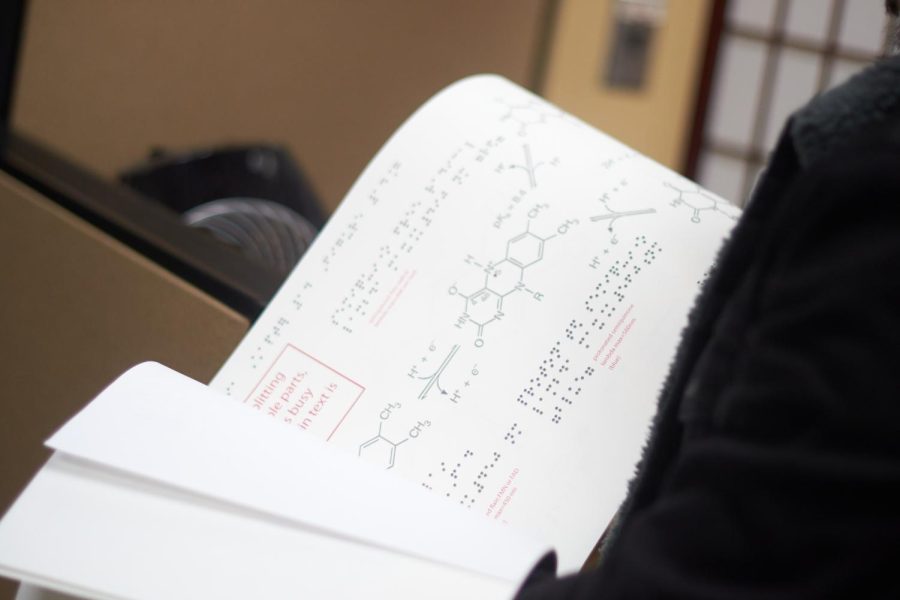How Disability Access Services assists students through their classes
Assistive Technology Manager, Randy Ocampo, shares examples of learning materials that the center has printed in braille in the DAS office on the second floor of the Kerr Administration Building on OSU campus Friday, October 28th. The center has a machine that can print tactile graphics and a 3-D printer, both of which help to provide learning tools for visually impaired students.
November 10, 2022
Disability Access Services helps students in need of disability accommodations, from note taking technology to sign language interpreters. DAS tries to cover all student’s special needs.
DAS is the organization in charge of aiding OSU students that may need disability accommodations in their classes. Some of their accommodations include but are not limited to building access such as electronic doors and wheelchair ramps, academic help such as real time captions for lectures, creation of audio books, tactile graphics and even sign language interpreters and transcribers that can be assigned to students on request.
“We also employ about 30 to 40 student workers who help us with creating tactile graphics…they help to create those when we put captions on videos that faculty are using in their classes,” said Martha Smith, Director of Disability Access Services.
DAS also has a printing center located on their main office on the second floor of Kerr Administration Building, where students can print documents, use the computers for their assignments and even use the 3D printer to visualize class material.
Additionally, DAS counts with a testing center that is located on the third floor of Heckart Lodge where students can ask for testing accommodations for their classes.
Students that wish to apply for DAS need to go to their website and complete the DAS application form, then after a period between three to four weeks they will have an orientation with an advisor that will guide them on how to use or request their specific accommodations.
“When a student is approved for permanent accommodations, they don’t have to apply each term for those accommodations, but they do have to go in and request them for their classes (each term),” Smith said.
DAS also works closely with faculty to make their classes more accessible using the principle of universal design, which states that environments, buildings or even products should be accessible to people, regardless of age, disability or other factors. This design philosophy addresses common barriers to participation by creating things that can be used by the maximum number of people possible.
“For example, the Student Experience Center. That was built with accessibility in mind, so if for instance you go into the restroom, there are no doors to get into the restroom,” said Smith. “So if somebody has their arms full, they use crutches, or if they’re visually impaired or if you have a small child with you, you’re not worrying about navigating through a door to get to the restroom.”
Universal design is usually employed in the classroom with the inclusion of tools such as video captions on lectures, improving accessibility to all sorts of students.
“A lot of the problems that we solve here are not always out of the box, cookie cutter solutions. A lot of times we need to create solutions on the fly,” said Randy Ocampo, assistive technology manager of DAS.










































































































